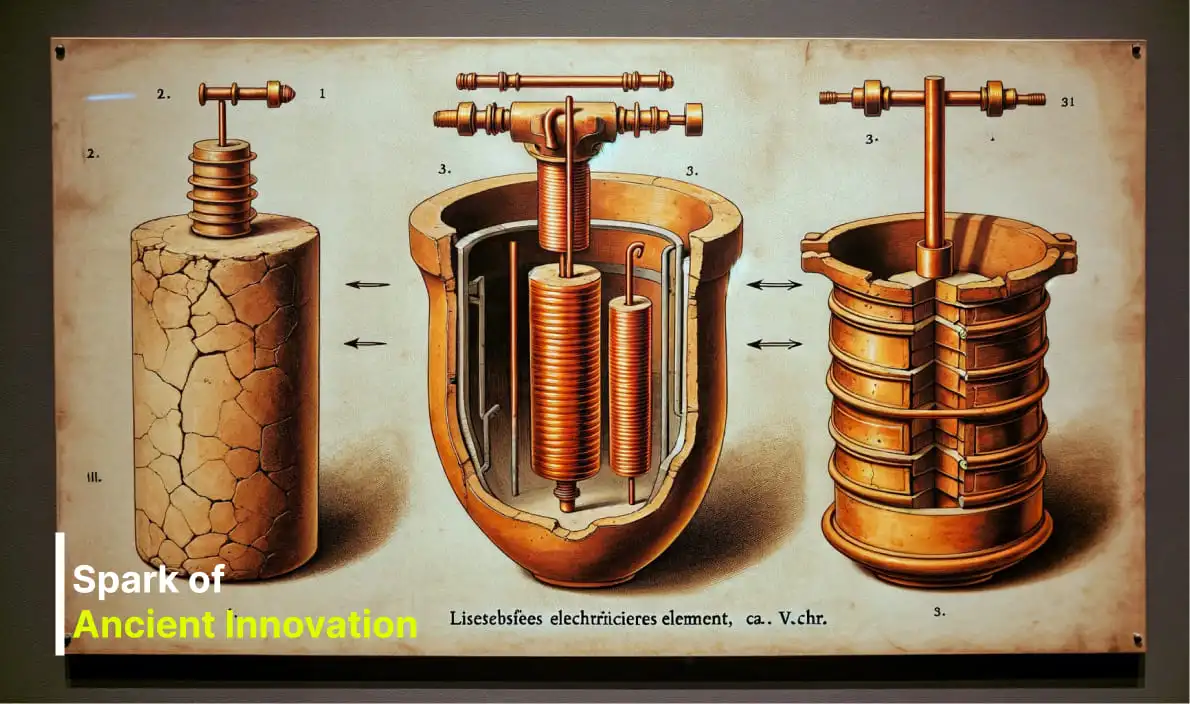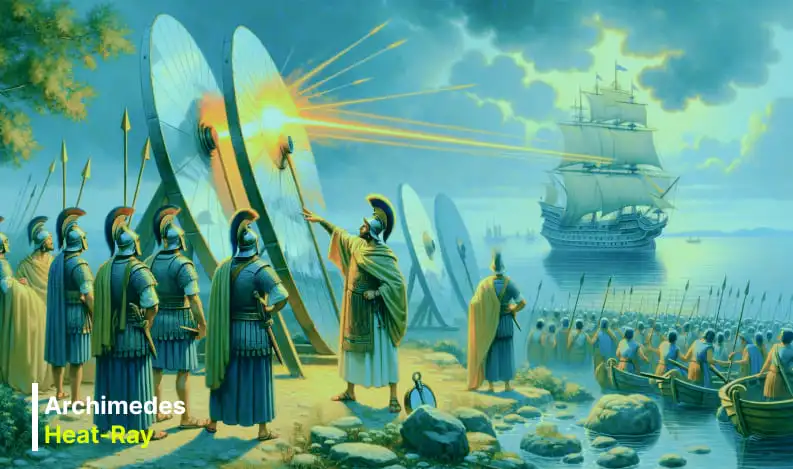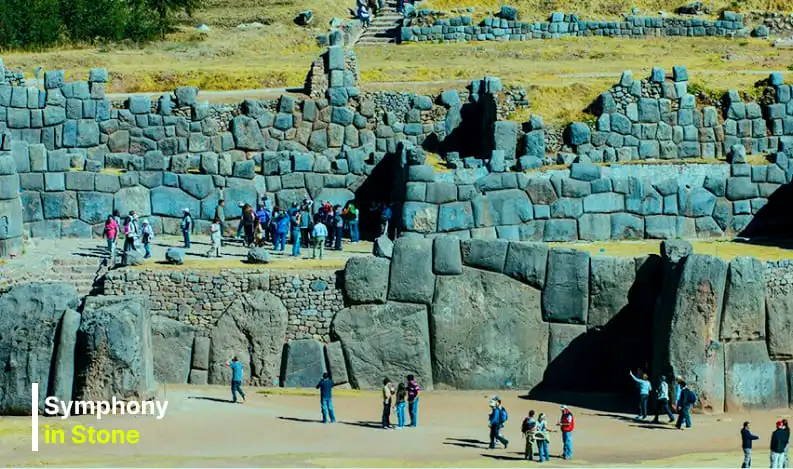
Timeless Innovations: The Untold Stories of Ancient Mastery
Introduction
Embark on an enthralling journey through the annals of history, where the echoes of ancient ingenuity resonate with the clarity of a bell struck at dawn. In today's fast-paced era, marked by exponential technological advancements, it's all too easy to overlook the monumental achievements carved by the hands of our ancestors. Hidden within the depths of time lie technologies so advanced and enigmatic, they continue to challenge and inspire the brightest minds of the 21st century. From the unquenchable inferno of Greek Fire to the celestial intricacies of the Antikythera Mechanism, these ten ancient marvels stand as towering testaments to the resourcefulness and ingenuity of civilizations long vanished. As we delve into these wonders, we shed light on the brilliance that forged the very foundation of the world as we know it, inviting you to rediscover the awe-inspiring innovations of ages past.

1. Greek Fire: The Byzantine Empire's Secret Weapon
Within the annals of military history, few inventions have captured the imagination quite like Greek Fire. This formidable weapon, wielded with devastating effect by the Byzantine navy, played a pivotal role in repelling enemy fleets and safeguarding an empire. Its composition, a closely guarded secret zealously protected by the emperors, remains a mystery to this day. Historians speculate that it was a concoction of highly flammable substances, capable of igniting upon contact with water, a feature that rendered it a terror on the seas. Deployed through elaborate tubes or siphons, Greek Fire was not merely a weapon but a symbol of Byzantine ingenuity and might, its legacy enduring as the ancient precursor to the modern flamethrowers that would follow centuries later.

2. The Antikythera Mechanism: A Window to the Heavens
The Antikythera Mechanism stands as a beacon of ancient technological achievement, a device so sophisticated that its discovery challenged our understanding of historical advancements. Composed of over 30 intricately meshed bronze gears, this ancient Greek apparatus was engineered to predict lunar and solar eclipses, track the cycles of the Olympic Games, and model the complex, irregular orbit of the Moon. Unearthed from the depths of a shipwreck off the coast of Antikythera, this celestial calculator demonstrates a level of mechanical engineering thought to be centuries ahead of its time, suggesting that the ancients possessed a comprehension of the cosmos that rivals that of today's astronomers.

3. The Great Pyramids of Giza: Monoliths of Mystique
The Pyramids of Giza, those timeless sentinels of stone, stand as enduring enigmas of architectural mastery. Constructed without the conveniences of modern machinery, the wheel, or even iron tools, these monumental structures were brought into being through the sheer force of human will and ingenuity. Each block, weighing an average of 2.5 tons, was quarried, transported, and assembled with an astonishing degree of precision. The pyramids' alignment with the cardinal points of the compass, coupled with their strategic placement at the geographical heart of the Earth's land masses, underscores an exceptional understanding of mathematics, astronomy, and geography, revealing a civilization in profound harmony with the cosmos.

4. The Iron Pillar of Delhi: Testament to Timeless Metallurgy
In the bustling heart of Delhi stands a marvel of ancient metallurgy, the Iron Pillar. This testament to the advanced metalworking skills of ancient India has withstood the ravages of time, remaining uncorroded for over a millennium. The secret to its longevity lies in the high phosphorus content of the iron, which catalyzed the formation of a thin protective layer of misawite. This passive film has safeguarded the pillar from the relentless advance of corrosion, a feat of material science not replicated until the advent of modern stainless steel, making the pillar not only a symbol of enduring strength but also a subject of fervent scientific inquiry.

5. The Baghdad Battery: A Spark of Ancient Innovation?
The enigmatic artifact known as the Baghdad Battery, comprising a clay jar, a copper cylinder, and an iron rod, has ignited a firestorm of debate among archaeologists and historians. Discovered in the vicinity of Ctesiphon, near Baghdad, this trio of objects has been posited as evidence of an ancient galvanic cell, suggesting that our ancestors might have dabbled in the rudimentary principles of electricity. While some contend that it was used for electroplating gold onto silver, a practice known as gilding, others remain skeptical, proposing alternative theories. Despite this, the Baghdad Battery stands as a tantalizing hint at the possibility of ancient electrical knowledge, challenging our perceptions of technological progress.

6. Archimedes' Heat-Ray: Between Myth and Mastery
Among the myriad tales of ancient ingenuity, few have captured the collective imagination quite like the legendary heat-ray of Archimedes. Employed during the Siege of Syracuse, this purported ancient weapon utilized an array of polished bronze mirrors to focus the sun's rays onto approaching enemy ships, setting them ablaze. While the historical accuracy of this account is a matter of debate, the legend embodies the ancient world's fascination with the principles of reflection, concentration of solar energy, and the potential of harnessing the power of the sun, standing at the crossroads of myth and technological possibility.

7. The Viking Compass: Masters of the Sea
The seafaring prowess of the Vikings is the stuff of legend, and central to their navigational arsenal was an instrument known as the sun compass, or sunstone. This ingenious device, possibly fashioned from a crystalline mineral like calcite, allowed Viking navigators to discern the sun's direction even under the most overcast skies. Such adaptability on the open seas underscores not only the Vikings' mastery of navigation but also their profound connection to the natural world, a testament to the enduring human spirit of exploration and conquest.

8. Stonehenge: Celestial Alignments of Stone
The prehistoric monument of Stonehenge, with its towering sarsen stones and enigmatic bluestones, has long captivated the human imagination. Its purpose, shrouded in mystery, is believed by many to be astronomical. The precise alignment of the stones with the solstices and certain lunar events suggests that Stonehenge served as an ancient observatory, a sacred place where the movements of the heavens were honored and predicted. The monumental effort required to transport and precisely place these stones speaks to an extraordinary level of organization, cooperation, and celestial knowledge, marking Stonehenge as a profound expression of prehistoric man's gaze towards the cosmos.

9. Ancient Model Aircraft: The Dream of Flight
The discovery of artifacts resembling modern aircraft in the tombs of ancient Egypt and the soil of Central America has sparked intrigue and debate among historians and enthusiasts alike. These models, complete with wings, stabilizers, and suggestive aerodynamic forms, have been interpreted by some as evidence of an ancient understanding of flight principles. While mainstream archaeology typically views these objects as stylized representations of birds or insects, their remarkable similarity to modern aerodynamic designs continues to fuel speculation and wonder about humanity's age-old fascination with the skies.

10. Sacsayhuamán: A Symphony in Stone
Perched high above the city of Cusco, the fortress of Sacsayhuamán stands as a monument to the architectural and engineering genius of its creators. The precision with which the colossal stones are cut and fitted together, some weighing over 100 tons, defies easy explanation. Traditional methods involving ropes, levers, and wooden frames are often cited, yet the exact techniques remain a subject of awe and wonder. Sacsayhuamán is not merely a fortress but a testament to a sophisticated understanding of stone masonry, geometry, and perhaps, a lost technology of stone manipulation.
Conclusion
As we navigate the currents of the digital age, with its relentless march of innovation and discovery, it is imperative that we pause to reflect on the monumental legacies of our ancient forebears. The stories of Greek Fire, the Antikythera Mechanism, and the majestic Pyramids of Giza are not mere relics of a bygone era but are the bedrock upon which our modern understanding is built. These ancient marvels, from the rust-resistant Iron Pillar of Delhi to the celestial alignments of Stonehenge, remind us that the human quest for knowledge and the drive to innovate are as ancient as civilization itself. They beckon us to look beyond the confines of our time, to marvel at the boundless curiosity and intellect that have always propelled humanity forward. In exploring these ancient mysteries, we not only pay homage to the ingenuity of our ancestors but also find inspiration for the future, for it is in the echoes of their achievements that our own aspirations take flight.








Recent Comments: